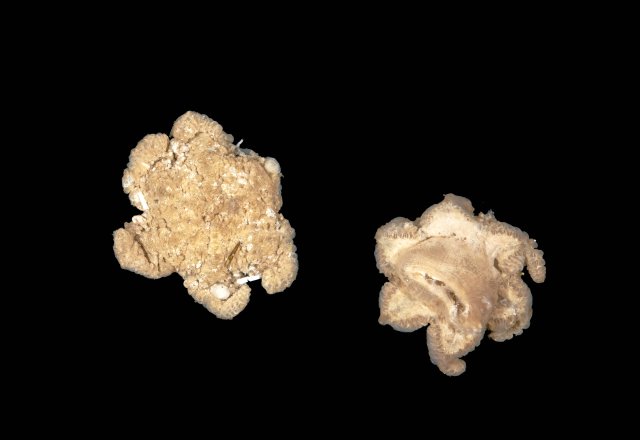This newly discovered species in the deep sea could belong to the octocorals.
Foto: NIWA/OCEAN CENSUS Sadie Mills
During a three-week expedition, researchers discovered a hundred potentially new animal species along an 800-kilometer-long depression in the sea off New Zealand. Among them is a “star-shaped blob” that scientists have not yet been able to assign to a genus.
In the sea east of New Zealand lies the Bounty Trough, a depression that is part of a 4.9 million square kilometer area that scientists call Zealandia. Zealandia, like South America, Africa, Antarctica, India and Australia, is one of the parts into which the supercontinent Gondwanaland once split. Zealandia still poses many mysteries to science today, not least because it lies almost entirely below sea level.
A research ship from the New Zealand National Institute of Water and Atmospheric Research, or NIWA for short, has been searching for unknown life forms in this previously little-explored region for three weeks. The expedition, which was commissioned by Ocean Census – a global alliance to accelerate the discovery and protection of ocean life – collected nearly 1,800 samples from depths of up to 4,800 meters.
Three new species of fish discovered
Among the samples were a number of extremely curious creatures and, above all, “a wide range of new, undiscovered species,” said Alex Rogers, scientific director of Ocean Census and co-leader of the expedition. Rogers expects ongoing studies of the specimens to yield over 100 new species. The new species identified so far include dozens of molluscs, three fish, a shrimp, a cephalopod and a new genus of coral. Above all, the fact that three new species of fish were among the finds was something very special, said Rogers.
Until now, the deep seabed off New Zealand had hardly been explored and scientists knew little about the animals that lived there. The current expedition has shown that the Bounty Trough is absolutely teeming with life, said NIWA marine biologist Sadie Mills.
Researchers hope for a new genus
One discovery is currently puzzling experts: the “mystery species,” as the researchers call the bizarre creature, is a light brown “blob” that somewhat resembles a starfish. But as Michela Mitchell from the Queensland Museum Network explained, initial investigations revealed that the creature was neither a starfish nor a sea anemone. “We have a lot of experts here who are taking a look at it and are very excited,” she said.
Currently they would assume that it could be a new species of octocoral or a completely new genus. Unlike many other coral species, octocorals are not involved in the construction of coral reefs because their skeleton quickly decays after the animals die. According to the scientist, if the animal were a completely new species, this would of course be much more exciting. “If so, this is a significant find for the deep sea,” she said. This would then give science a “much clearer picture of the planet’s unique biodiversity.”
Most species-rich habitat on earth
To collect the samples, the research vessel carried different types of equipment behind it, depending on the terrain on the seabed. These included one that towed a net to collect samples, a more robust device for rocky surfaces, another instrument that took water samples just above the seafloor, and an underwater camera.
Despite their joy at the discoveries, the researchers also emphasized that, despite their rich haul, the expedition had “only scratched the surface of the Bounty Trough.” There is much more to discover, said a press release. In fact, the gaps in knowledge about the depths of the sea remain large. It is believed that around 2.2 million species populate the Earth’s oceans, making them the most diverse habitat on Earth. According to the Ocean Census, only around 240,000 of them have been described by science so far.
Become a member of the nd.Genossenschaft!

Since January 1, 2022, the »nd« will be published as an independent left-wing newspaper owned by the staff and readers. Be there and support media diversity and visible left-wing positions as a cooperative member. Fill out the membership form now.
More information on www.dasnd.de/genossenschaft
judi bola sbobet judi bola sbobet
